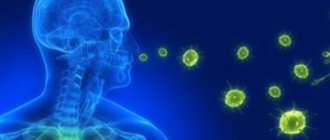Indications
- Treatment of protozoal infections: intestinal and extraintestinal amebiasis, trichomoniasis.
- Infections caused by gram-negative anaerobes of the Bacteroidaceae family: brain and lung abscesses, necrotizing pneumonia, infections of the osteoarticular system, bacterial endocarditis and sepsis.
- The drug is effective against clostridial flora, which causes infections of the genitourinary system and infections of the abdominal organs.
- Metronidazole is used in gastroenterology for the treatment of gastritis, gastric and duodenal ulcers associated with H. pylori.
- Prophylactic use during operations on the colon and gynecological interventions.
Prescription of Metronidazole, contraindications and side effects
The instructions for the drug indicate the following indications for use:
- For suppositories - for urethritis, trichomonas vaginitis, amoebic dysentery, giardiasis. Metronidazole is used to prevent infection during surgery, exacerbation of ulcers, chronic gastroduodenitis associated with Helicobacter pylori infection. Prescribed for chronic alcohol dependence.
- For ointment - for bacterial vaginosis, vulgar or rosacea acne, wounds, trophic ulcers that do not heal for a long time. The medication is prescribed to patients with demodicosis, amoebiasis, trichomoniasis, limbliasis, cystitis, and urethritis. Shows sufficient effectiveness in the treatment of infections of the central nervous system, bacterial damage to the bone tissue of the joints, pelvic organs or abdominal cavity.
Metronidazole tablets and other forms are used for the development of pseudomembranous colitis, ulcers, gastroduodenitis, and for the prevention of complications in the postoperative period.
The medication is contraindicated in patients:
- with individual intolerance to the component composition;
- organic lesions of the central nervous system, including epilepsy;
- leukopenia, liver failure;
- when breastfeeding.
Particular care is taken when treating pregnant women or people with renal failure. In these cases, the treatment regimen and dosage are calculated by the doctor.
The main adverse reactions to Metronidazole are:
- attacks of nausea, vomiting, refusal to eat, diarrhea, constipation, intestinal colic, stomatitis, pancreatitis, dry oral mucosa;
- impaired coordination of movements, ataxia, attacks of dizziness, confusion, depression, hallucinations, unreasonable irritability, excitability, convulsive syndrome, headache, sleep disturbances;
- nettle fever, rashes, redness, arthralgia;
- candidiasis, urinary incontinence, polyuria, cystitis, reddish-brown coloration of urine;
- thrombophlebitis.
Laboratory tests show a decrease in the number of neutrophils and leukocytes.
Instructions for use of the drug metronidazole
Inside, with a glass of water.
The daily dose is divided into 3 doses for adults, and 2 doses for children 6-15 years old. For trichomoniasis infection, 2 treatment regimens are used: 2 g of the drug once or 0.250 g twice a day, course 10 days.
When Helicobacter pylori is irradiated, metronidazole is combined with penicillin antibacterial drugs to suppress drug resistance. The daily dose of metronidazole is 1.5 g.
Metronidazole in the treatment of intestinal amebiasis is used in a daily dose of 1.5 g.
For acute amoebiasis, the daily dose is 2.250 g. The daily dose for children is 0.5 g.
Treatment of extraintestinal forms of amebiasis requires combination with tetracycline antibacterial drugs. The daily dose of metronidazole is 2.5 g in adults and 0.5 g in children.
Prevention of complications after surgical interventions involves taking 0.750 - 1.5 g of the drug per day for 4 days before surgery and 0.750 in the postoperative period for a week.
Metronidazole-AKOS (Metronidazole-AKOS)
Gastrointestinal disorders
: epigastric pain, nausea, vomiting, diarrhea, glossitis, stomatitis, “metallic” taste in the mouth, decreased appetite, anorexia, dry eating and diet of the oral cavity, constipation, pancreatitis (reversible cases), change in tongue color/”coated tongue” (due to the growth of fungal microflora).
Immune system disorders
: angioedema, anaphylactic shock.
Nervous system disorders
: peripheral sensory neuropathy, headache, convulsions, dizziness, the development of encephalopathy and subacute cerebellar syndrome (impaired coordination and synergism of movements, ataxia, dysarthria, gait disturbances, nystagmus, tremor), which are reversible after discontinuation of metronidazole, aseptic meningitis, has been reported.
Mental disorders
: psychotic disorders, including confusion, hallucinations; depression, insomnia, irritability, increased excitability.
Visual disorders
: transient visual impairments, such as diplopia, myopia, blurred contours of objects, decreased visual acuity, impaired color perception; neuropathy/optic neuritis.
Blood and lymphatic system disorders
: agranulocytosis, leukopenia, neutropenia, thrombocytopenia.
Disorders of the liver and biliary tract
: increased activity of “liver” enzymes (aspartate aminotransferase, alanine aminotransferase, alkaline (phosphatase), development of cholestatic or mixed hepatitis and hepatocellular liver damage, sometimes accompanied by jaundice; in patients treated with metronidazole and combinations with other antibacterial agents, cases of liver failure were observed, requiring liver transplantation.
Skin and subcutaneous tissue disorders
: rash, itching, skin flushing, urticaria, pustular skin rash, Stevens-Johnson syndrome, toxic epidermal necrolysis.
Renal and urinary tract disorders:
staining of urine in a brownish-reddish color, due to the presence in the urine of a water-soluble metabolite of metronidazole, dysuria, polyuria, cystitis, urinary incontinence, candidiasis.
General and administration site disorders
: fever, nasal congestion, arthralgia, weakness, thrombophlebitis (pain, hyperemia or swelling at the injection site).
Laboratory and instrumental data : flattening of the T wave on the electrocardiogram.
Side effects and features of administration
The most common violations:
- Gastrointestinal tract: abdominal discomfort, nausea, vomiting, impaired taste perception (“metallic” taste in the mouth), diarrhea;
- immunity: anaphylactic shock, angioedema;
- skin: rash, itching, urticaria;
- genitourinary system: change in the color of urine up to a reddish-brown color, candidiasis.
The drug crosses the placental barrier, which completely limits its use in the first trimester of pregnancy. In the second and third trimester, metronidazole is used if the estimated risk to the fetus is lower than the possible benefit to the pregnant woman. Treatment of a lactating woman requires cessation of breastfeeding.
When treating trichomoniasis, it is necessary to carry out therapy simultaneously in both partners and to exclude sexual contact for the period of therapy.
Metronidazole, 5 mg/ml, solution for infusion, 100 ml, 1 pc.
Gastrointestinal disorders:
epigastric pain, nausea, vomiting, diarrhea, glossitis, stomatitis, “metallic” taste in the mouth, loss of appetite, anorexia, dry oral mucosa, constipation, pancreatitis (reversible cases), change in tongue color/“coated tongue” (from - for the growth of fungal microflora).
Immune system disorders:
angioedema, anaphylactic shock.
Nervous system disorders:
peripheral sensory neuropathy, headache, convulsions, dizziness, the development of encephalopathy and subacute cerebellar syndrome (impaired coordination and synergy of movements, ataxia, dysarthria, gait disturbances, nystagmus, tremor), which are reversible after discontinuation of metronidazole, aseptic meningitis, has been reported.
Mental disorders:
psychotic disorders, including confusion, hallucinations; depression, insomnia, irritability, increased excitability.
Visual disorders:
transient visual impairments, such as diplopia, myopia, blurred outlines of objects, decreased visual acuity, impaired color perception; neuropathy/optic neuritis.
Blood and lymphatic system disorders:
agranulocytosis, leukopenia, neutropenia, thrombocytopenia.
Disorders of the liver and biliary tract:
increased activity of “liver” enzymes (aspartate aminotransferase, alanine aminotransferase, alkaline phosphatase), the development of cholestatic or mixed hepatitis and hepatocellular liver damage, sometimes accompanied by jaundice; In patients treated with metronidazole in combination with other antibacterial agents, cases of liver failure requiring liver transplantation have been observed.
Disorders of the skin and subcutaneous tissues:
rash, itching, skin flushing, urticaria, pustular skin rash, Stevens-Johnson syndrome, toxic epidermal necrolysis.
Renal and urinary tract disorders:
staining of urine in a brownish-reddish color, caused by the presence in the urine of a water-soluble metabolite of metronidazole, dysuria, polyuria, cystitis, urinary incontinence, candidiasis.
General disorders and disorders at the injection site:
fever, nasal congestion, arthralgia, weakness, thrombophlebitis (pain, hyperemia or swelling at the injection site).
Laboratory and instrumental data:
flattening of the T wave on the electrocardiogram.
Interaction with other medications
Sulfonamides potentiate the main effect of metronidazole.
Simultaneous use with disulfiram increases the risk of developing psychosis. The medications should be taken two to three weeks apart.
During therapy with metronidazole, it is necessary to stop drinking alcohol, including drugs made from ethanol. Neglect will lead to disulfiram-like reactions.
Metranidazole potentiates the activity of indirect anticoagulants, which increases the risk of bleeding. While taking metronidazole, it is necessary to strengthen monitoring of prothrombin time and adjust the dose of anticoagulants.
Similar drugs:
- Metronidazole Nycomed Oral tablets
- Metrogyl (Metrogyl) Solution for injection
- Metronidazole-LekT Oral tablets
- Atrican 250 Capsule
- Lotrimin Cream for external use
- Ginalgin Vaginal tablets
- Metron (Metron) Solution for infusion
- Osarbon (Osarbonum) Vaginal suppositories
- Metronidazole-AKOS Oral tablets
- Metrogyl Oral suspension
** The Drug Directory is intended for informational purposes only. For more complete information, please refer to the manufacturer's instructions. Do not self-medicate; Before starting to use the drug Metronidazole-ESKOM, you should consult a doctor. EUROLAB is not responsible for the consequences caused by the use of information posted on the portal. Any information on the site does not replace medical advice and cannot serve as a guarantee of the positive effect of the drug.
Are you interested in the drug Metronidazole-ESKOM? Do you want to know more detailed information or do you need a doctor's examination? Or do you need an inspection? You can make an appointment with a doctor - the Euro lab is always at your service! The best doctors will examine you, advise you, provide the necessary assistance and make a diagnosis. You can also call a doctor at home . Euro lab clinic is open for you around the clock.
** Attention! The information presented in this medication guide is intended for medical professionals and should not be used as a basis for self-medication. The description of the drug Metronidazole-ESKOM is provided for informational purposes and is not intended for prescribing treatment without the participation of a doctor. Patients need to consult a specialist!
If you are interested in any other drugs and medications, their descriptions and instructions for use, information about the composition and form of release, indications for use and side effects, methods of use, prices and reviews of drugs, or you have any other questions and suggestions - write to us, we will definitely try to help you.








